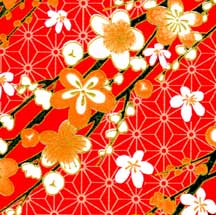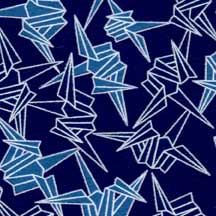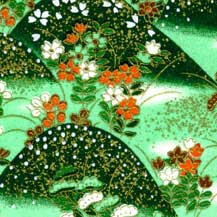ABOUT JAPANESE WASHI PAPER
Washi paper was first made in ancient Japan about 600 AD. The word “Washi” comes from wa meaning Japanese and shi meaning paper, and is used to describe paper made by hand in the traditional manner. It is made using fibers from the bark of the gampi tree, the mitsumata shrub or the paper mulberry (Kozo), but can also be made from other plant fibers. Making Washi paper is a long process done in winter since pure, cold running water is necessary. Plant fibers are beaten and soaked in a stream for a long time to soften. Eventually, wet balls of pulp are mixed in a vat of water and scooped onto a screen and shaken to spread the fibers evenly.
Washi is tougher than ordinary paper made from wood pulp and is used in many traditional arts, and is the best choice for origami. Today good quality paper for origami is called Yuzen or “washi” but may be machine made sheets of mixed kozo and sulphite paper on which Chiyogami or Yuzen patterns are silkscreened. Every color in the design requires a different screen and swipe of the squeege with the final swipe outlining in gold (or sometimes white). Inexpensive origami paper is available as well, but is machine printed onto wood pulp paper and is more difficult to fold and does not have the beauty of the silkscreened papers.
Originally, folk or Chiyogami designs (Chiyo = 1,000’s of generations and gami = paper) were developed in the Japanese Edo period (1603-1868) as woodblock prints. They were based on bright kimono textiles worn by wealthy noble women in Kyoto. Many designs and symbols are inspired from ancient times: cranes for long life, bamboo for fexibility, plum blossoms for beauty, etc. Today, artists and designers continue to invent new patterns.



